This summer, the
International Center of Photography
(ICP) will present a major retrospective exhibition of the work of the multifaceted artist
William Klein. On view at ICP from June 3 through September 12, 2022,
William Klein:
YES; Photographs, Paintings, Films, 1948-2013 features nearly 300 works, filling ICP's
galleries with photographs, paintings, films, photobooks, and other media from Klein's
expansive and boundary-pushing six-decade career.
The first U.S. exhibition devoted to Klein's work in more than a generation, William Klein:
YES is curated by David Campany, ICP's Curator-at-Large. Campany has worked with Klein
for over a decade to bring together the diverse strands of Klein's global practice in painting,
graphic design, street photography, fashion photography, documentary film, scripted film,
and books. A fully illustrated book, written by Campany and published by Thames & Hudson,
will be published at a later date.
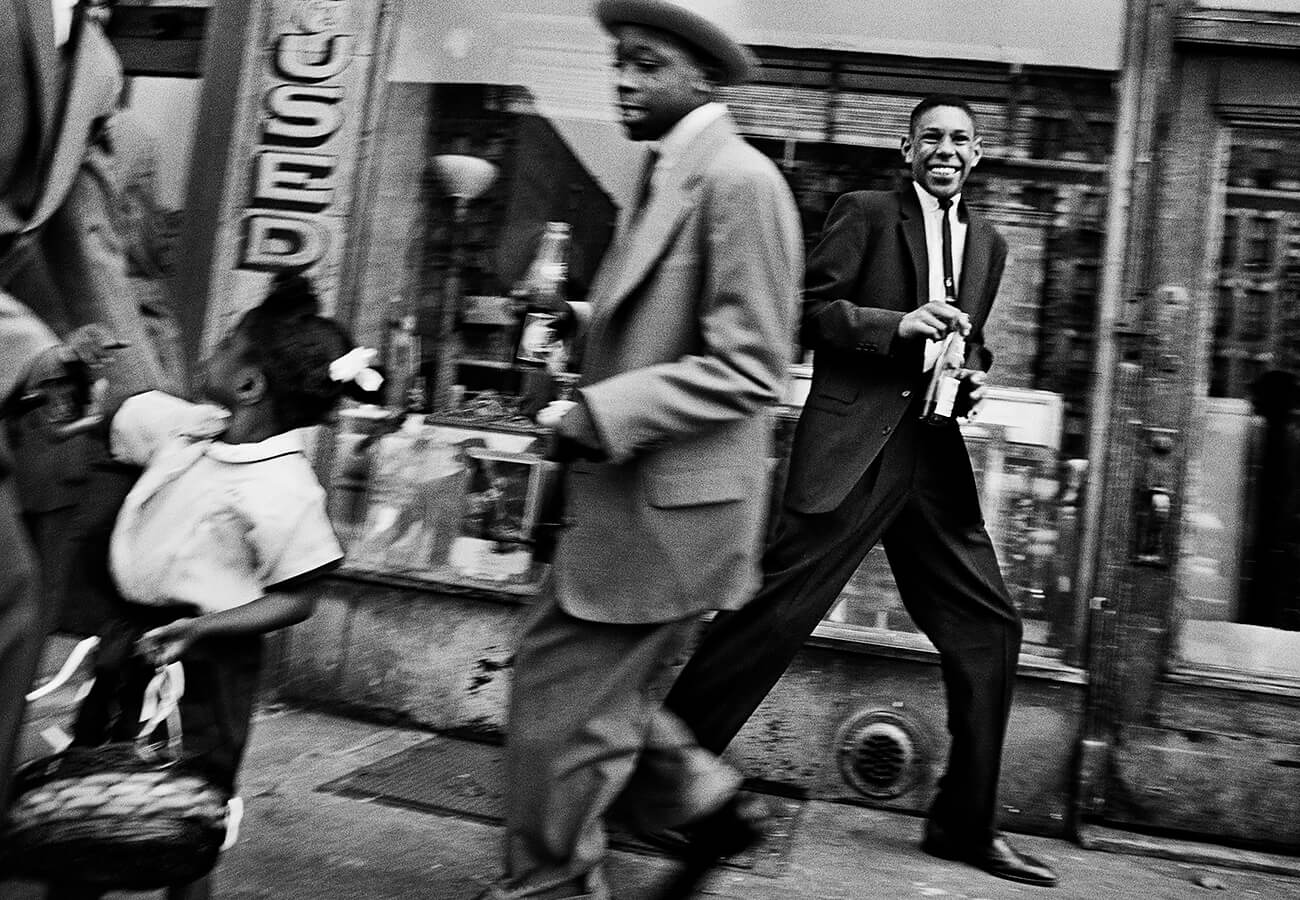
Moves and Pepsi, Harlem, New York, 1955. © William Klein, Courtesy Howard Greenberg Gallery
"For a long time, Klein was known as either a fashion photographer or a street photographer
or a filmmaker, as different audiences knew and valued different aspects of his work. Only in
recent years has the scope of his achievements begun to be recognized," said curator David
Campany. "Versatility runs against the idea that artistic significance is based on single
themes and recurring preoccupations. But artists like Klein, who ranged freely and avoided
specialism, are key to understanding the culture of the last century."
William Klein: YES explores the artist's life and career in a rough chronology that shows his
development as an artist and allows the connections between his different practices to
become apparent. Klein's work on view ranges from wildly inventive photographic studies of
New York, Rome, Paris, Moscow, and Tokyo to bold and witty fashion photographs; from
cameraless abstract photography to iconic celebrity portraits; from excerpts of documentary
films about Muhammad Ali, Eldridge Cleaver, and the Pan-African Festival of Algiers to
scripted films about the beauty industry, imperialism, and consumer culture.
"This exhibition at ICP is a homecoming of sorts for Klein, who was born in upper Manhattan
in 1928 and began his photography career on our city's streets," said ICP Director David
Little. "He then became a truly international artist, living most of his life in Paris and capturing
the unique character of global cities in his renowned photobooks. Klein is a living legend of
image-making, and ICP is honored to celebrate a prodigious career that influenced and
inspired generations."
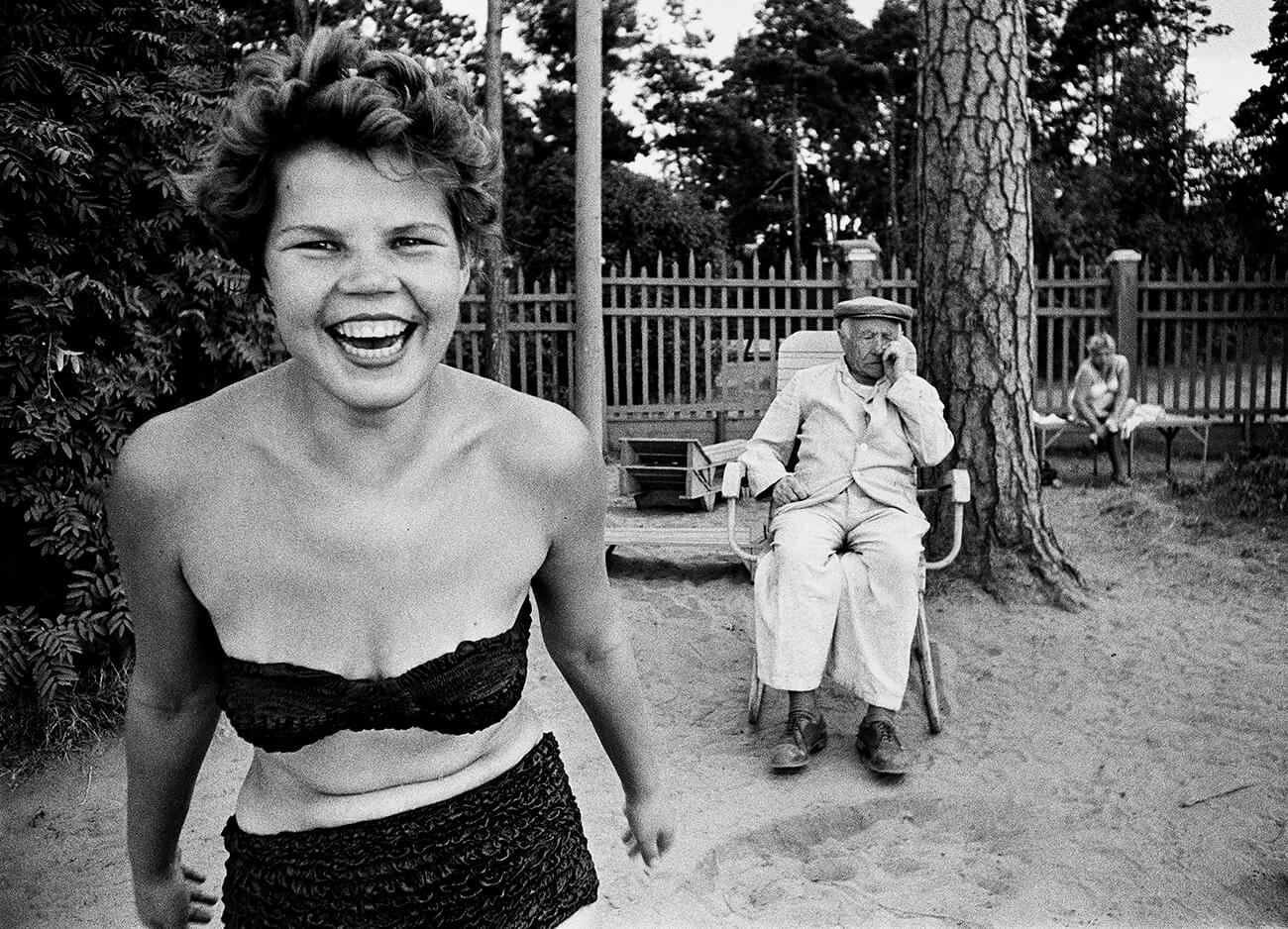
Bikini, Moskva (River), Moscow, 1959. © William Klein, Courtesy Howard Greenberg Gallery
An aspiring painter, Klein enrolled in the Paris studio of artist Fernand Léger in 1948, but
Léger's advice was to instead explore design and new media, such as photography, film, and
publishing. Klein persisted with painting and his 1952 exhibition of abstractions caught the
eye of an architect, who asked Klein to adapt his paintings for an apartment room divider
made of rotating panels, the original of which is on view in William Klein: YES. While
photographing the panels, Klein's wife, Jeanne, spun them, making abstract blurs from the
images.
Fascinated with the effect, Klein went into his darkroom and produced thousands of abstract
photograms. He cut circles, diamonds, and square-shaped holes in paper and moved them
around over the photographic paper during long exposures. The light produced dark marks,
like graphic drawings, on white backgrounds. Highlights of these photogram experiments are
on view in William Klein: YES, including Black Balls and Yellow Circles, Paris (1952) and
Abstract Composition with Orange Cube (ca. 1952).
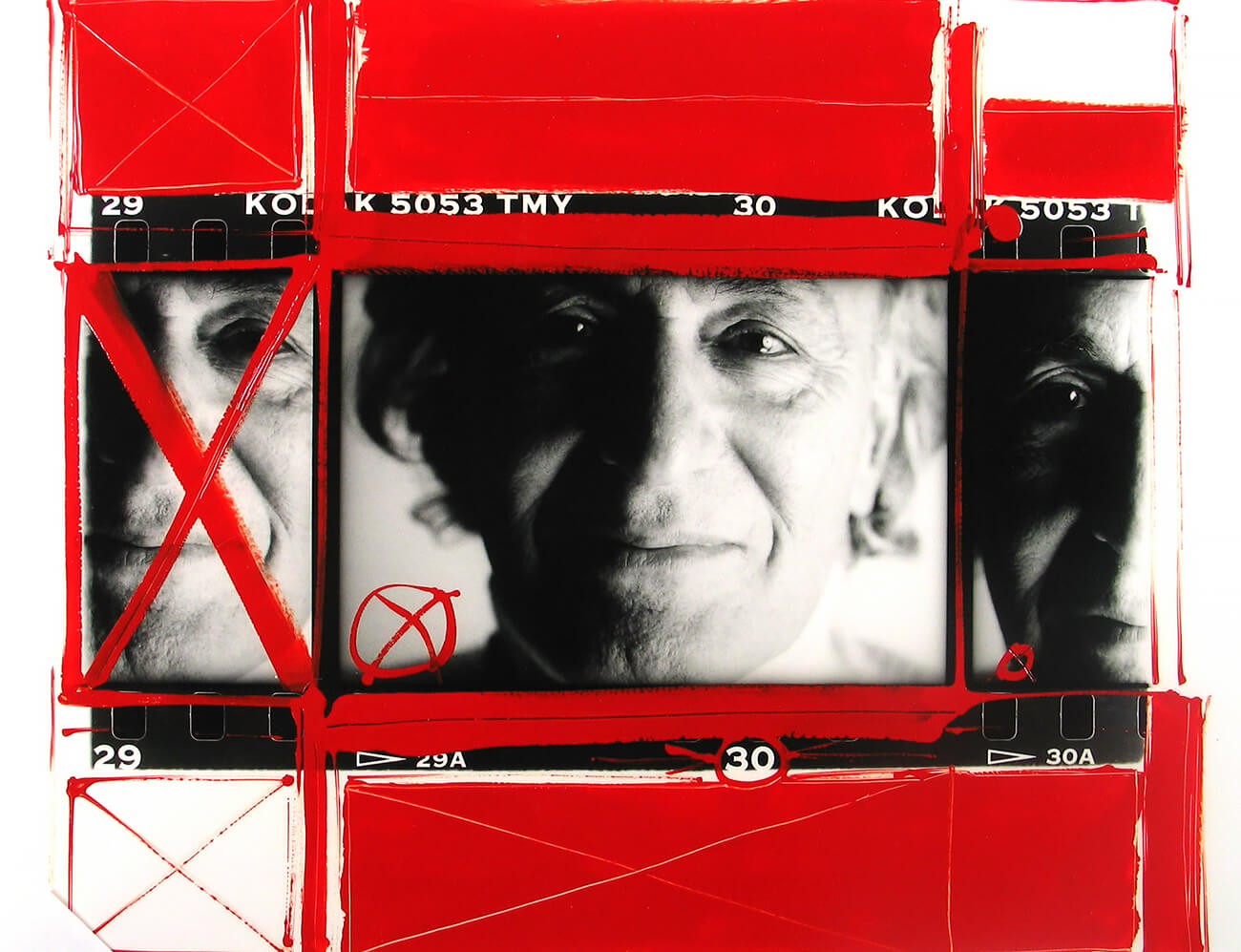
Auto-Portrait, 1993. © William Klein, Courtesy Howard Greenberg Gallery
After eight years in Paris, Klein returned to New York at the invitation of Alexander Liberman,
art director of American Vogue, who had seen his abstract photographs and paintings. He
threw himself into the city with enormous energy and vitality. In his very first attempts at
street photography he produced some of the most iconic and enduring images of the era.
Highlights on view in the exhibition include Moves and Pepsi, Harlem, New York (1955) and
Easter Sunday, Harlem High Hat, New York (1955)—street scenes imbued with energy and
movement. Of these works, David Campany notes that Klein "never attempt[s] to be invisible,
he is unmistakably part of each situation—interacting, collaborating, sharing, celebrating...
These are willfully immersive photographs, and all the richer for it."
Klein knew in 1955 that his New York photographs should be a book. With no outside help,
Klein selected the images and designed the layout and the cover himself. No American
publishers would produce it. Life is Good and Good for You in New York - Trance Witness
Revels (1956) was published widely abroad, influenced countless photographers, and is now
considered a classic. Klein continued to explore cities worldwide and produced the
celebrated photobooks Rome: A City and Its People (1959), Moscow (1964), and Tokyo
(1964), immersing himself in the unique culture of each place.
Klein returned to his street photography roots in 2013, shooting in Brooklyn for the first time
since 1955. The exhibition culminates with works from this series, including West Indian Day
Parade, Brooklyn, New York (2013) featuring a close-up image of a dancing parade-goer
that is among his most recent work.
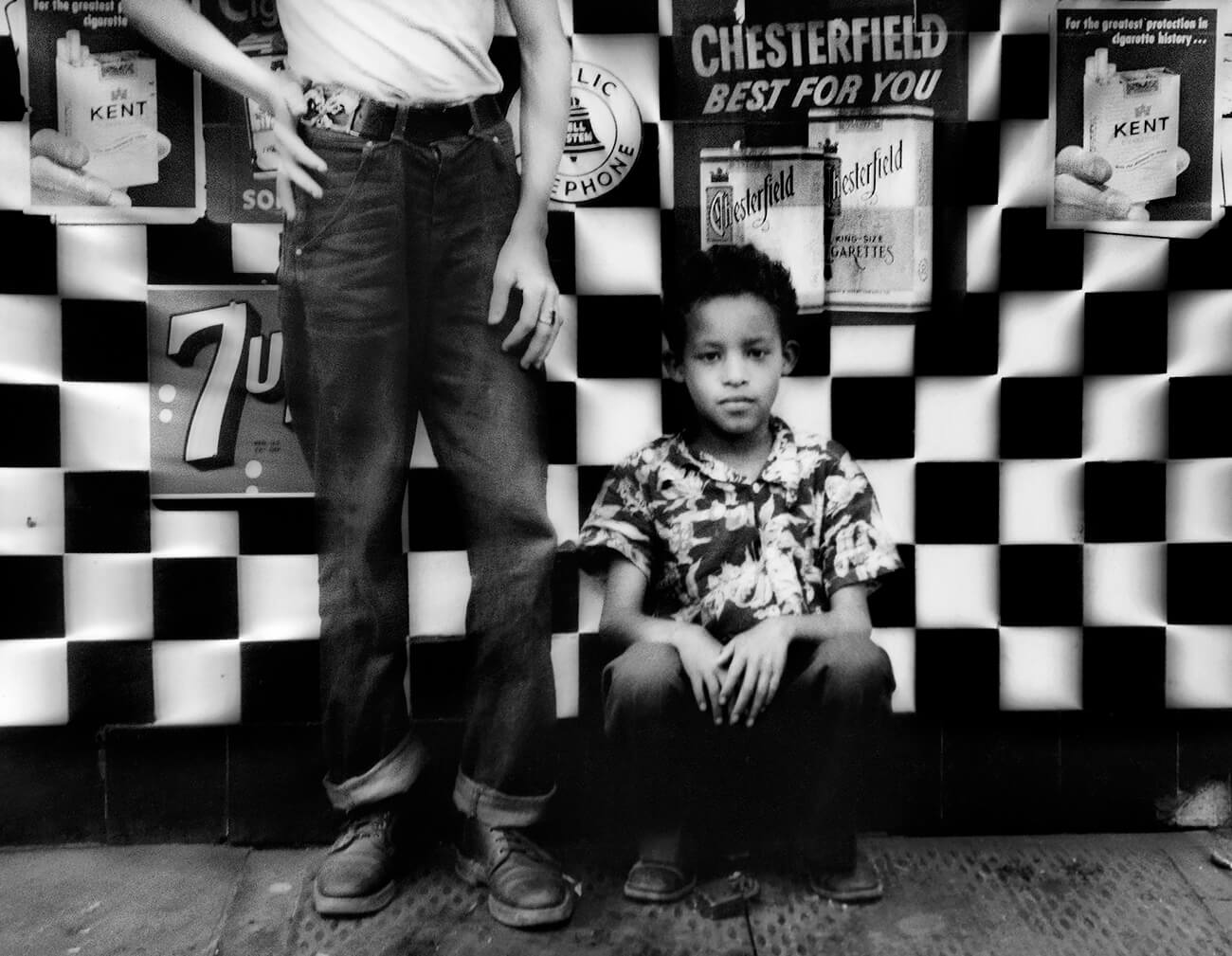
Candy Store, Amsterdam Avenue, New York, 1955. © William Klein, Courtesy Howard Greenberg Gallery
For decades Klein juggled commercial assignments around the world—including his "day
job" as a fashion photographer at Vogue—with personal projects in photography, film,
painting, and publishing. At Vogue, Liberman initially gave Klein still-life assignments, but he
soon became an inventive and spontaneous fashion photographer, working collaboratively
with models.
By the early 1960s Klein was the best-known and most exciting fashion photographer in the
world, shooting for Vogue's American, French, and British editions, yet he treated it all like a
game. He took models out into the street, such as a fashion shoot on a Roman crosswalk in
Nina and Simone, Piazza di Spagna, Rome (1960), or photographed street scenes and blew
them up as studio backdrops, such as the neon lights of Times Square in Dorothy and
Formfit, Paris (1961). He introduced abstract light marks, such as those that he had played
with in the darkroom, in Dorothy Juggling White Light Balls, Paris (1962).
Klein was pragmatic about his fashion work, saying "I accepted the obligation of showing the
clothes. Sharp, all the buttons, pleats and whatever. As long as I did that, I found I could do
pretty much what I wanted with the rest - backgrounds, attitudes, situations... Whatever, I
guess the editors didn't care as long as the reader didn't flip the page too fast."
Documentary & Scripted Films
Klein's first film was Broadway by Light (1958), a vivid, jazzy document of illuminated signs in
Times Square, which Orson Welles declared the first movie that truly needed to be in color.
Since then, Klein has made 27 documentaries and three feature films, with subjects ranging
from fashion, sports, music, dance, and opera to protest, war, and reflections on his own
career. William Klein: YES will highlight films from his career, including a projection of
Broadway by Light.
Klein's best-known documentary is Cassius the Great, 1964, featuring the young boxer
Cassius Clay as he prepares to fight Sonny Liston. An early example of spontaneous
filmmaking but without "fly-on-the-wall" objectivity, Clay improvises and spars with Klein's
camera. Klein then made The Pan African Festival of Algiers (1969), commissioned by the
Algerian state, about the 24-hour celebration of post-colonial, post-imperial independence.
Klein filmed nonstop with several crews to capture the simultaneous events. Edited as a
montage without narration, Klein plunges the viewer into the energy of artistic and political
possibility. While in Algiers, Klein discovered that Eldridge Cleaver, exiled minister of
information for the Black Panther Party, was also there. Klein filmed Cleaver intensively over
three days and nights, giving him space to elaborate his shrewd analysis of white
supremacy, but also to reveal his own complex psychology and unpredictable behavior.
Eldridge Cleaver, Black Panther (1970) screened in the United States with seats at
"revolutionary prices" and 50 percent of proceeds going to the Black Panthers.
Klein's scripted films Who Are You, Polly Maggoo? (1966), Mister Freedom (1968), and The
Model Couple (1975) are serio-comic responses to the worlds of fashion, politics, and
consumerism he knew so well as a photographer. Who Are You, Polly Maggoo? is a satirical
look at the beauty industry, exposing the shallow cynicism and vanity of the fashion world,
but with a profound concern for the humanity and well-being of the fragile central character—
played by the model Dorothy McGowan, featured in Klein's "Fashion with Light" series for
Vogue. The Model Couple is a comic but chillingly accurate prediction of "reality television"
and the cynical treatment of individuals by corporations, as a young couple is filmed by a
television crew around the clock and watched by a nation.
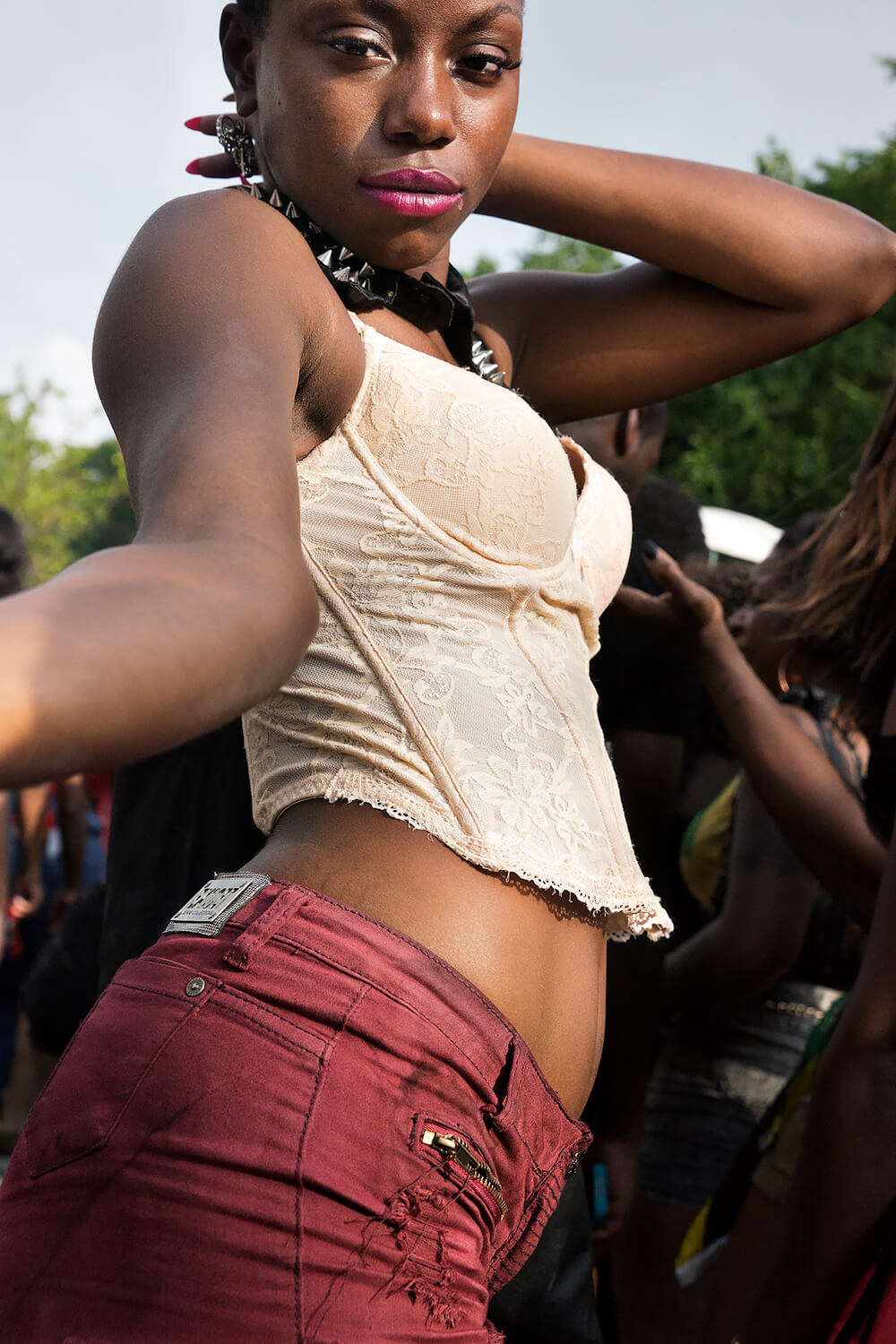
Black Venus West Indian Day Parade, Brooklyn, New York, 2013. © William Klein, Courtesy Howard Greenberg Gallery






